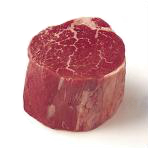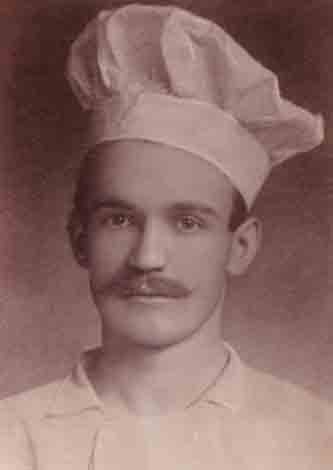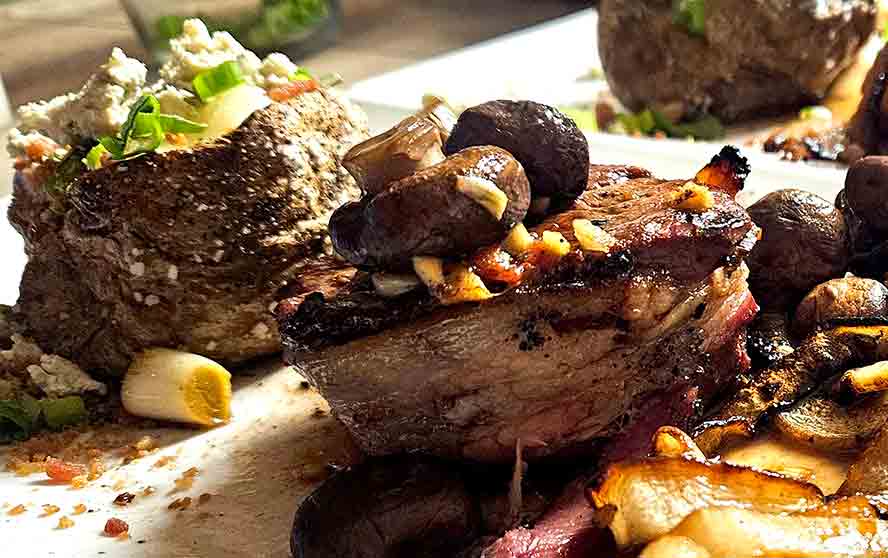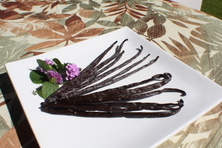Hint;
It's Not French!
Why do we call a tenderloin steak "Filet Mignon" in the US,
but no where else?
I have an idea that it's because beef was the predominant meat
in the US
at the turn of the 20th century,
and the French chef's that ruled the US gourmet cuisine scene
thought that might be a good name for it.
There is lots of great information about what is a Filet Mignon, and how to cook it.
There are a few interesting things about Filet Mignon that are fun.
A thick cut tenderloin, often wrapped in bacon,
that is on thousands of menus in the United States.
However you won't find this called "Filet Mignon" very often
outside the United States!
This French term refers to a pork or veal steak in France.
In France it looks more like a cut of meat called
"Tournedos"

Tournedo from the Wiki page
Now usually a Tournedo would not be just a broiled steak but
would have a fancy garnish and sauce as in
Tournedos Rossini.
Many sites on the internet claim that the term "probably came from a story by O'henry
called a
"A Cosmopolite in a Cafe"
1906

A story about a "cosmopolite" which refers to someone that is a
sophisticated world traveler and talks as if the
whole world
was his home but when someone insults his home town he acts
as if he looks more as if he is a hometown boy, that gets rattled and fights.
In all this "sophisticated"discussion was mentioned that after a nice sale,
they had "Filet Mignon with Champignons" and seems to be the first mention
of a tenderloin steak and mushrooms being called that.
At this time if you would have asked for Filet Mignon with Champignons
in France you would get a pork or veal steak with mushrooms.
However when doing a bit more research..... I found a fair amount of newspaper articles
that show "Filet Mignon" was a common term long before 1906.
Now the star chefs of the early 1900's were generally French trained
and our menus reflected many French dishes.
This is from the Chicago Tribune
April 16, 1901
This sounds so much like it was modified from
a Tournedos recipe, by the famous Paris trained chef

Theodore Pierrot from
the Wellington Hotel
 16 Apr 1901, Tue Chicago Tribune (Chicago, Illinois) Newspapers.com 16 Apr 1901, Tue Chicago Tribune (Chicago, Illinois) Newspapers.com
This is from 1898
Harlan County , Nebraska
This is a story, about (5 lines down)which a man in a cafe was deciding between
Grouse and Filet Mignon.
The significance is that this was way back in
1898.
 08 Apr 1898, Fri Harlan County Journal (Alma, Nebraska) Newspapers.com 08 Apr 1898, Fri Harlan County Journal (Alma, Nebraska) Newspapers.com
This is not the first time a European Pork Dish
was changed to a Beef Dish.
in Texas German-Austrian immigrants reproducing a Schnitzel
used beef instead of pork or veal and called it
Chicken Fried Steak
German-Austrian dish is an illustrious forebear to our chicken-fried steak. German immigrants brought the breaded and fried cutlet to the Texas frontier, where it was quickly copied -with less finesse-by chuck-wagon cooks and farm wives trying to make a tough cut of beef more palatable.
Even the gravy ladled on top has Teutonic roots: Rahmschnitzel is garnished with cream sauce. Schnitzel is German for cutlet. It is most often made from veal, but pork and, less frequently, beef also are used. Though there are many variations, the most popular is probably Wiener schnitzel, a crisply coated cutlet served plain except for a squeeze of lemon."
---"Plate Teutonics; Hofstetter's Wiener schnitzel is a cut from history," The Dallas Morning News, January 23, 1994, Pg. 21
|
|
|











